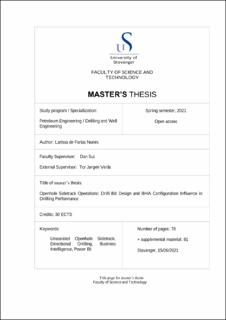| dc.description.abstract | Sidetrack is a typical drilling technique in which a deviation is made from an already existing well from a position other than its end. Several openhole sidetracks have been performed over the last couple of years in Norway, and they have been both planned multilateral wellbores and unplanned technical sidetracks. The sidetrack of the well is achieved by time-drilling. Time-drilling is a lengthy operation that requires patience from the operators. Times up to 24 hours for this procedure are not uncommon, and sometimes the ledge created is not enough to kick off from a well successfully. The openhole sidetrack operation can be executed in different ways. Drillers may perform an assisted or an unassisted OHSDTR. An assisted operation uses a cement plug or a whipstock as support. An unassisted operation only uses the directional BHA to create the ledge. Data-driven decisions based on operations history contribute to improving performance and, consequently, reducing operators costs with drilling activities. Little effort has been made to track the performance of the different BHA types and drill bits used for unassisted openhole sidetracking. This thesis proposes the Lesson Learned of the drill bit features and BHA configuration influence in unassisted openhole sidetracking performance. In addition, it aims to examine how the findings align with directional drilling theory. | |
